Cards In This Set
| Front | Back |
|
Dental Caries Definition
|
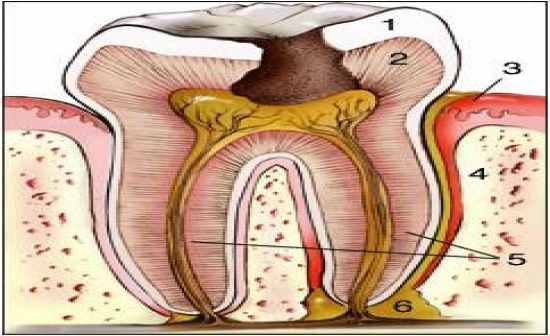 - this is a unique form of infection in that specific strains of bacteria elaborate acidic and proteolytic products that demineralize the enamel surface and digest the organic matrix - they will progress through the dentin to the pulp, where it can penetrate further to infect the surrounding soft tissues resulting in pain and destruction - may spread to bone marrow spaces and soft tissues of the face and neck |
|
Dental Caries Correlates
|
- prevalence and severity differ among different cultures and countries
- closely correlated with consumption of sugar (refined CHO, dental care and OH, as well as Fluoridation of water |
|
Dental Carries Susceptibility
|
- susceptibility to caries differs among different age groups and individual teeth
- young patients with high sucrose diets and poor OH are most prone to the pit and fissure caries (2nd molars followed by 2nd premolars) - highest susceptibility - if the oral environment is extremely cariogenic then the smooth surfaces of molars and premolars will be affected (interproximal followed by buccal and lingual) |
|
Types of Dental Caries
|
- Pit and Fissure
- Smooth Surface - Cemental - Recurrent |
|
Pit and Fissure Caries
|
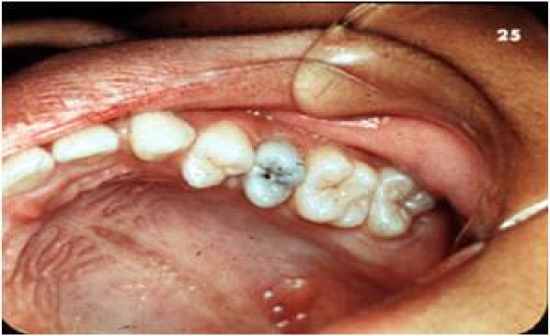 - these are the most common type of caries which can develop at an early age - these will occur on the occlusal and buccal surfaces of the primary and permanent dentition - these are also the most destructive carries |
|
Smooth Surface Caries
|
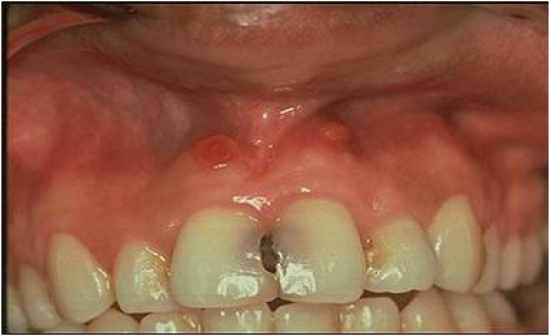 - these are less common located on the interproximal areas and occasionally on the cervical of buccal and lingual surfaces - common in caries in infants who are sleeping with juice or milk in their bottle or milk - also common in patients who undergo radiation therapy or have dry mouth |
|
Cemental Caries
|
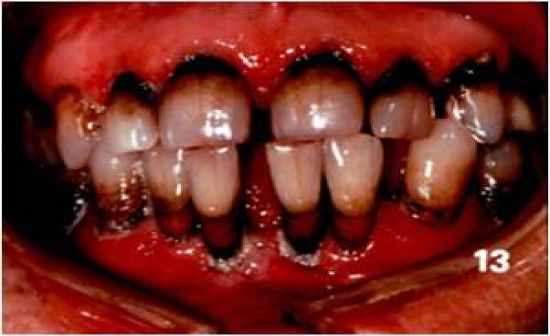 - these caries are usually found in older patients in teeth with gingival recession - these will have a rapid progression to the pulp |
|
Recurrent Caries
|
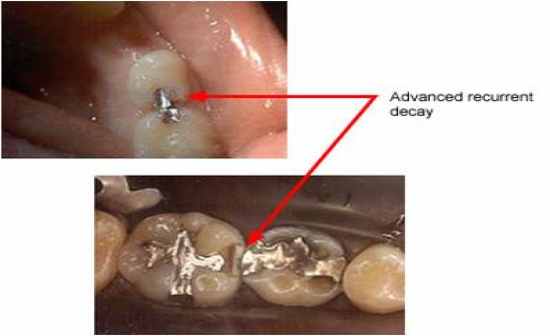 - caries which develop around an existing restoration - these situations predispose a tooth to the accumulation of bacteria and food in an environment protected from the usual hygiene procedure - different rate of progression depends on the patient diet and hygiene habits |
|
Acute (Rampant) Caries
|
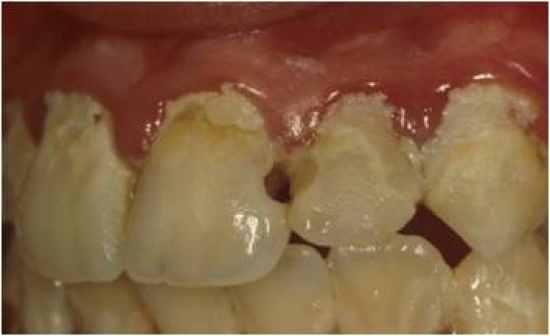 - these are in young patients with large pulpal chambers and wide, short dentinal tubules - patients with a high sugar diet and poor OH - caries progress rapidly and penetrate into the pulp |
|
Chronic Caries
|
- these are seen in older patients with a smaller pulp
- pulps with deposits of denser and less tubular dentin on pulpal walls called secondary dentin (also tertiary present) - pain is not as severe as in acute caries |
|
Pulpitis
|
- an inflammation of the pulpal tissue that may be acute or chronic, with or without symptom, and reversible or irreversible
- patient will develop symptoms from an inflammation of the pulp |
|
Reversible Pulpitis
|
- this is a case in which the pulp is capable of a full recovery if the irritating factors subside or are removed
- remedy is protecting the pulp from further injury - symptoms - pain is sharp and last less than 20 sec - elicited pain, not spontaneous; unaffected by body position and is easily localized - histologically characterized by increased vascularity of the tissues |
|
Irreversible Pulpitis
|
- the pulp will most likely not recover, regardless of the attempts to treat it
- we have common diagnostic techniques to determine irreversible from reversible pulpitis (history, thermal, electric, percussion, radiographic, visual, palpation) |
|
Acute Pulpitis
|
- the patients are younger and the pulp chamber is closed
- the pain is spontaneous and affected by body position which is often difficult to localize - this can be dull or sharp, but more intense and lasting more than 20 sec, and responds with higher voltages to the electrical stimulation or no response |
|
Chronic Pulpitis
|
- this is present in an older tooth which is caused by a low grade irritant
- smaller pulp chamber with a fibrotic pulp, pulp stones, or dystrophic calcification with sclerotic dentinal tubules - dull and low intensity pain, or no pain at all |



